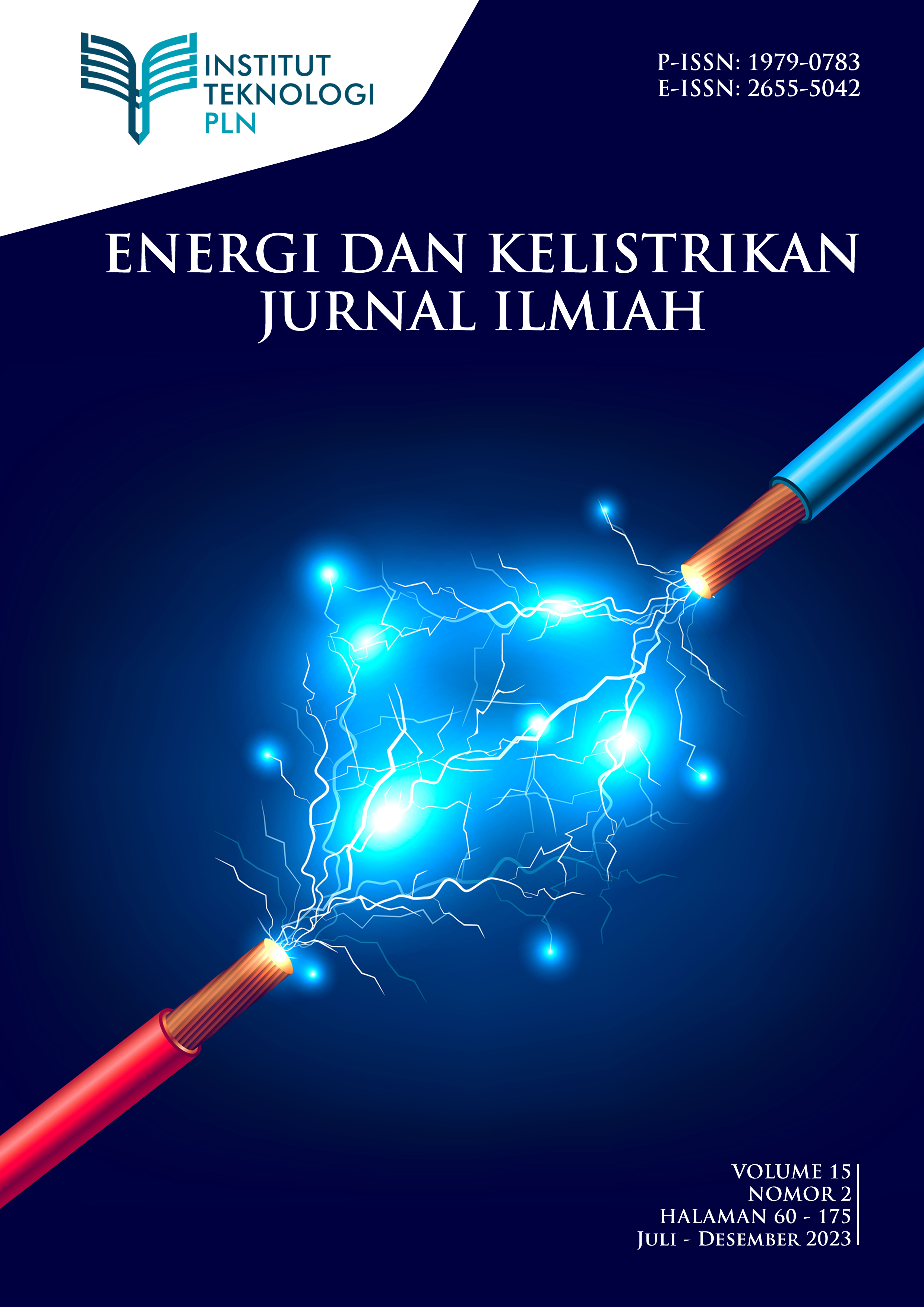Alat Pendeteksi Kesalahan Pembacaan kWh Meter 1 Fasa dengan Notifikasi SMS disertai Lokasi
Main Article Content
Abstract
In the implementation of electricity energi transactions, it is important to accurately record the amount of electricity consumed by customers. One possible error that can occur in kWh meters is non-technical power loss, where the recorded energi is lower than the actual energi used by customers. This issue has detrimental impacts on companies in the electricity business, leading to the implementation of Electricity Usage Regulation (P2TL) activities on customer kWh meters. The objective of this research is to design a single-phase kWh meter reading error detection tool to identify anomaly in kWh meters. The tolerance limit for measurement error used is ±1% in accordance with Class 1.0 kWh meters. The research methodology includes literature studies, prototype system design, partial testing, and overall system integration testing. The test data results from this research show a deviation of 0.76% for kWh meters with standard wiring, while kWh meters with non-standard wiring exhibit a deviation of 45.84%. In the system for reading errors in single-phase kWh meters, the measured power values are displayed on an LCD screen, and the system also sends SMS notifications.
Downloads
Article Details
References
E. Wahjono, M. M. Rifadil, O. A. Qudsi, and M. N. Sururi, “Meter Energi1 Fasa Dengan Proteksi Over Voltage Dan Under Voltage berbasis Internet of Things (IoT),” INOVTEK - Seri Elektro, vol. 2, no. 2, p. 121, 2020, doi: 10.35314/ise.v2i2.1384.
N. G. Pahiyanti, S. Sukmajati, and M. R. Nur, “Penurunan Susut Jaringan Dengan Penertiban Pemakaian Tenaga Listrik,” SUTET, vol. 9, no. 1, pp. 36–45, Jun. 2019, doi: 10.33322/sutet.v9i1.502.
R. F. Ariyanti, “Identifikasi Penyebab Susut Energi Listrik PT PLN (Persero) Area Semarang Menggunakan Metode Failure Mode & Effect Analysis (FMEA),” Ind. Eng. Online J., vol. 1, no. 1, pp. 1–8, 2019, [Online]. Available: https://ejournal3.undip.ac.id/index.php/ieoj/article/view/23259
M. Artiyasa, S. N. Hanifah, and A. Felani, “Analysis deviation of direct measurement KWh meter in PLN P2TL Rayon Sukaraja Kab. Sukabumi,” in 2017 International Conference on Computing, Engineering, and Design (ICCED), Nov. 2017, pp. 1–6. doi: 10.1109/CED.2017.8308107.
T. Hasan, D. K. Elwarin, and S. Sesa, “Pengaruh Kondisi Wiring Terhadap Persentase Kesalahan (Error) Pada KWH Meter,” J. ELKO (Elektrikal dan Komputer), vol. 1, no. 1, Jun. 2021, doi: 10.54463/je.v1i1.3.
D. J. P. K. dan T. Niaga, Keputusan Direktur Jendral Perlindungan Konsumen dan Tertib Niaga Nomor 161 Tahun 2019 Tentang Syarat Teknik Meter kWh. Jakarta: Kementrian Perdagangan, 2019.
D. O. Anggriawan, A. R. Fauzi, and E. Wahjono, “RANCANG BANGUN KWH METER DIGITAL 1 PHASE PROGRAMMABLE BERBASIS IOT,” in Seminar Nasional Terapan Riset Inovatif (SENTRINOV) Ke-8, 2022, vol. 8, no. 1, pp. 122–129. [Online]. Available: https://proceeding.isas.or.id/index.php/sentrinov/article/view/1161
D. Gunawan, D. Erwanto, and Y. Shalahuddin, “Studi Komparasi Kwh Meter Pascabayar Dengan Kwh Meter Prabayar Tentang Akurasi Pengukuran Terhadap Tarif Listrik Yang Bervariasi,” Setrum Sist. Kendali-Tenaga-elektronika-telekomunikasi-komputer, vol. 7, no. 1, p. 158, Jun. 2018, doi: 10.36055/setrum.v7i1.3408.
S. Darma, Yusmartono, and Akhiruddin, “Studi sistem peneraan kwh meter,” J. Electr. Technol., vol. 4, no. 3, pp. 158–165, 2019.
I. Ferdiansyah, E. Sunarno, P. A. Mahadi Putra, and B. Q. Avrila, “Alat Pengukur Deviasi pada KWH Meter 3 Fasa berbasis PZEM 0047 dan Flame Sensor,” JTT (Jurnal Teknol. Terpadu), vol. 9, no. 1, pp. 99–107, 2021, doi: 10.32487/jtt.v9i1.1128.
PT. PLN (Persero), Peraturan Direksi PT PLN (PERSERO) Nomor 088-Z.P/DIR/2016 Tahun 2016 tentang Penertiban Pemakaian Tenaga Listrik, Tagihan Susulan dan Pemutusan Sambungan Tenaga Listrik. Jakarta, 2016.
R. Hidayat, I. Made, A. Nrartha, I. Bagus, and F. Citarsa, “RANCANG BANGUN SMART kWh METER 3 FASE DENGAN KOMUNIKASI SMS GATEWAY Design Of 3 Phase Smart kWh Meter Using SMS Gateway Communication,” vol. 7, no. 2, pp. 140–148, 2020.
A. N. Waldi, “Akurasi Pengukuran kWh Meter Analog Terhadap Losses Energi Listrik,” Sutet, vol. 11, no. 2, pp. 105–113, 2021, doi: 10.33322/sutet.v11i2.1577.
T. Pasaribu and M. A. Bakri, “Aplikasi Sensor Potodioda Pada Sistem Monitoring Kwh Meter Berbasis Komunikasi Sms,” JREC (Journal Electr. Electron., vol. 6, no. 1, pp. 53–64, Jul. 2018, doi: 10.33558/jrec.v6i1.1380.
K. ’Ulya, Y. C. Arif, and L. P. S. Raharja, “Monitoring and Control Design of Automatic Transfer Switch-Automatic Main Failure with Human Machine Interface (HMI),” J. Ilm. Tek. Elektro Komput. dan Inform., vol. 8, no. 3, p. 475, 2022, doi: 10.26555/jiteki.v8i3.23750.

